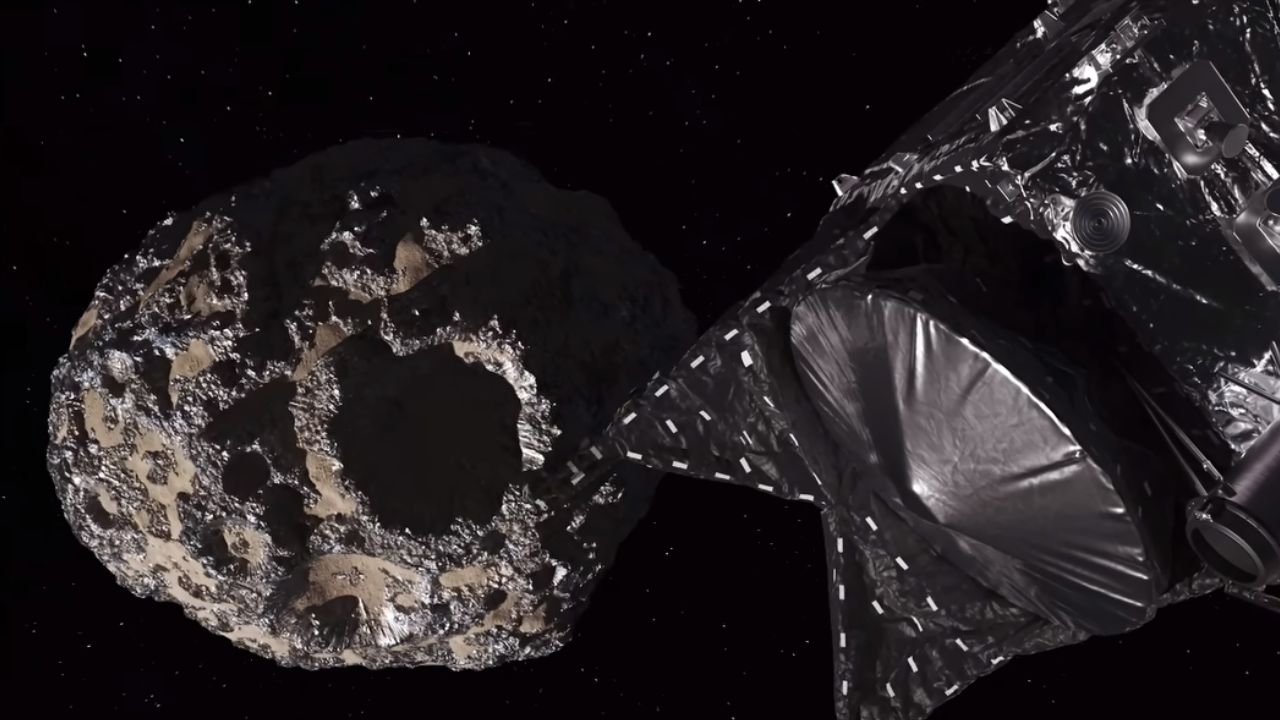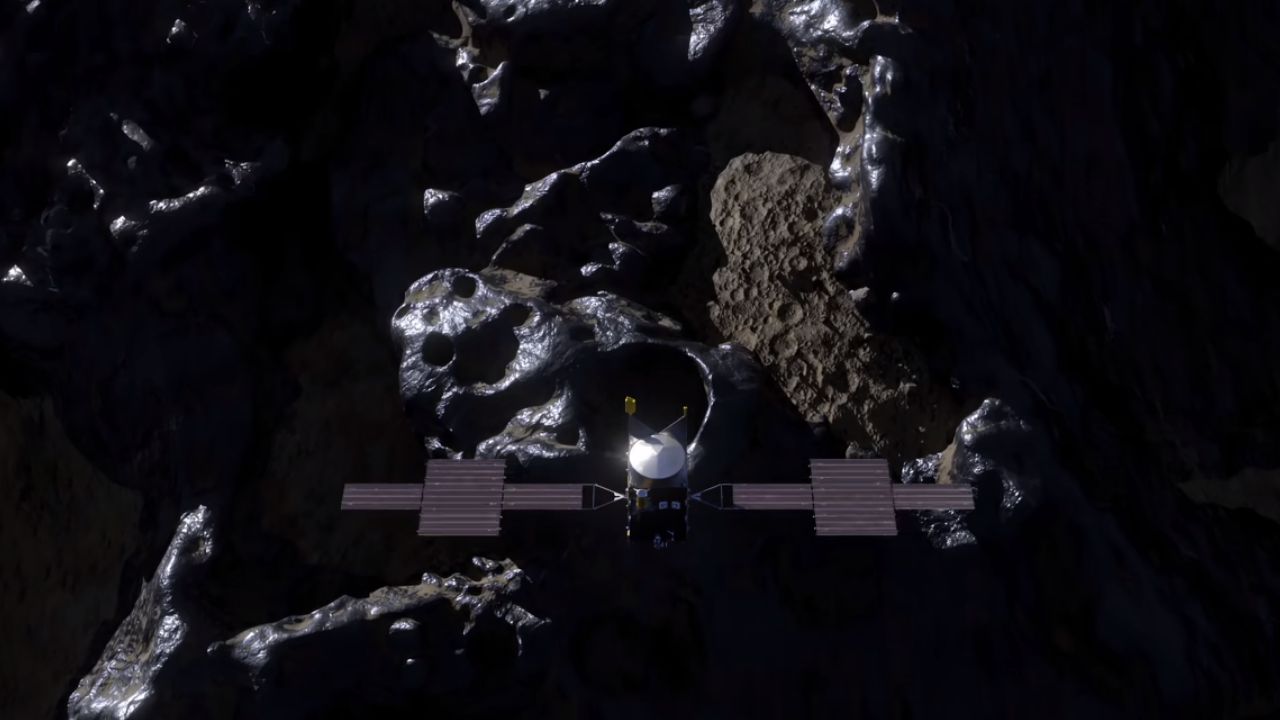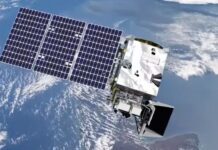NASA is embarking on an unprecedented mission, venturing to explore a metallic object within our solar system for the very first time.
This pioneering journey aims to provide crucial insights into whether the asteroid known as Psyche represents a rare exposed core from the early stages of planetary formation, a question that has intrigued scientists.
Psyche, a metal-rich asteroid, resides within the main asteroid belt, nestled between the orbits of Mars and Jupiter. The spacecraft named after this celestial body, Psyche, is scheduled to launch on Thursday.
Read More: SpaceX Buys Advertising Package for Starlink
It’s important to note that while previous missions like OSIRIS-REx have focused on near-Earth asteroids that could pose a potential collision threat to our planet, Psyche is not a danger to Earth. Positioned at a distance of approximately 235 million to 309 million miles (378 million to 497 million kilometers) from the sun, this colossal space rock is safely out of Earth’s reach.

Following its launch, the mission will reach the asteroid’s orbit in 2029, embarking on a two-year scientific exploration of Psyche. Equipped with a suite of advanced instruments, the spacecraft will delve into the heart of the asteroid, aiming to unravel its true nature.
Psyche, the asteroid at the heart of NASA’s mission, was first spotted by Italian astronomer Annibale de Gasparis on March 17, 1852. Named after the Greek goddess of the soul, Psyche stands as the largest M-type, or metallic, asteroid within our solar system.
According to Dr. Zoe Landsman, a science adviser to the Exolith Laboratory at the University of Central Florida, “Psyche is something of the poster child of the M-type asteroids. Of a group of weird and mysterious asteroids, it is the biggest, weirdest, and most mysterious.”
Read Also: Elon Musk Borrows $1 Billion from SpaceX
This peculiar celestial body takes on a lumpy, potato-like shape, with measurements of approximately 173 miles (almost 280 kilometers) at its widest point and a length of 144 miles (232 kilometers), as reported by NASA.
Radar and telescope observations have provided valuable insights into Psyche’s composition. It is believed to contain iron and trace amounts of nickel and other metals, all of which are abundant within our solar system. However, despite its metal-rich nature, the asteroid’s density suggests that it isn’t solid metal. Psyche also appears to possess some rocky material and silicate, commonly found in substances like glass and sand.

Scientists theorize that Psyche may have originated as the iron-rich core of a planetesimal—an early building block of planets—similar to Earth and other terrestrial planets from the early days of the solar system. Over time, Psyche likely experienced collisions with other rocky bodies, gradually shedding its outer layers until only its metal core remained.
Landsman notes, “But there is a possibility that Psyche is a more primordial object that never separated into crust, mantle, and core. This is another big question that the mission can answer.”
Recent observations of Psyche conducted in February 2022 using NASA’s retired Stratospheric Observatory for Infrared Astronomy supported the theory that it indeed contains an iron-rich core.
The study of Psyche continues to unveil intriguing mysteries, prompting lead author Anicia Arredondo, a postdoctoral researcher at the Southwest Research Institute in San Antonio, to note, “Every time a new study of Psyche is published, it raises more questions.”
You Can Read: SpaceX 4 Astronauts Safely Splash Down in Florida
Arredondo’s research findings indicate that Psyche is a highly complex celestial body, teeming with the potential for numerous surprises. The element of the unexpected adds a thrilling dimension to the mission to explore this uncharted territory, and scientists eagerly anticipate gaining a more comprehensive understanding of Psyche’s origins.
The presentation of Arredondo’s findings took place during the joint 2023 Annual Meeting of the Division for Planetary Sciences and Europlanet Science Congress in San Antonio.
The study of Psyche holds significance in addressing fundamental questions about the formation of planets. While Earth, Mercury, and Mars possess metallic cores, they are situated too deep beneath the rocky surface to be observed or studied directly.
If the observations from the mission ultimately confirm Psyche’s identity as an exposed metallic core, it could provide valuable insights into the composition of planetary cores, shedding light on the true nature of what resides at the heart of our own planet. Additionally, the spacecraft’s instruments will investigate the asteroid’s surface for signs of differentiation, a process in which elements separate within a planet, causing dense materials like metals to sink to the center and form a core.
Dr. Zoe Landsman, a science adviser to the Exolith Laboratory at the University of Central Florida, expressed her personal curiosity about the appearance of Psyche, stating, “Personally, I want to know what this thing looks like!” She emphasized that we have never had the opportunity to closely examine the surface of a metallic celestial body. Unlike planets with protective atmospheres, asteroids are exposed to the harsh conditions of space, including weathering from micrometeorite impacts and radiation. Landsman pondered the effects of space weathering on a metal world like Psyche.
While a 2020 study speculated that a chunk of iron the size of Psyche could potentially be valued in the quadrillions of dollars, Dr. Philip Metzger, a planetary physicist at the University of Central Florida’s Florida Space Institute, cautioned against placing such a price tag on Psyche. He explained that Psyche’s remote location makes it an impractical target for mining, despite the potential profitability of asteroid mining in closer proximity to Earth. Metzger highlighted two key reasons for this impracticality: first, if the vast quantities of metal present on Psyche were brought back to Earth, it would no longer be considered rare, causing the price of metals to plummet. Second, the exorbitant transportation costs associated with bringing back metal from the distant Psyche would render any mining venture unprofitable.














![Technical Aspects of 844 Area Code in 2024 [Detail Guide] 844 Area Code](https://articleify.com/wp-content/uploads/2024/01/844-Area-Code-150x150.jpg)














